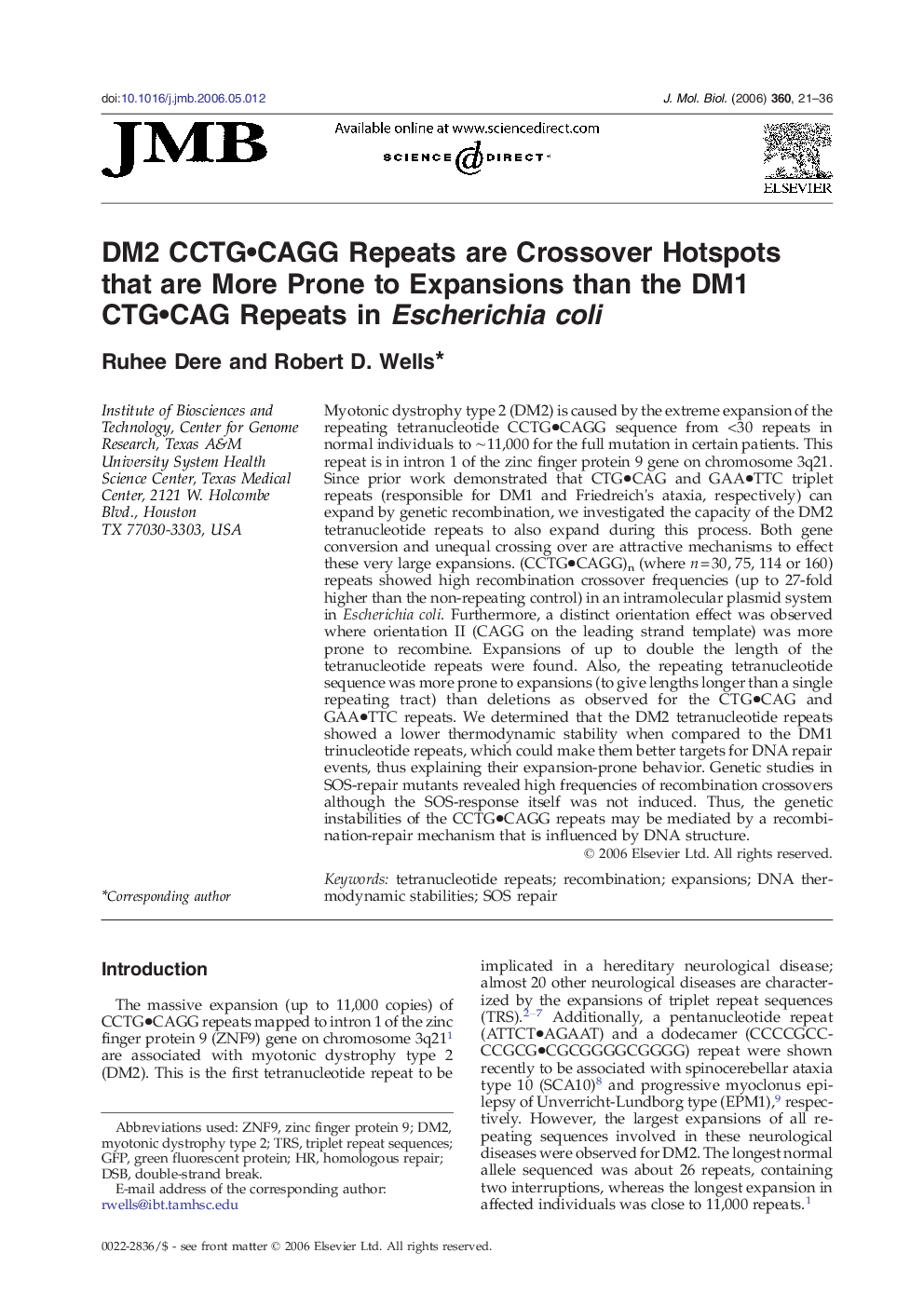| کد مقاله | کد نشریه | سال انتشار | مقاله انگلیسی | نسخه تمام متن |
|---|---|---|---|---|
| 2189576 | 1096216 | 2006 | 16 صفحه PDF | دانلود رایگان |

Myotonic dystrophy type 2 (DM2) is caused by the extreme expansion of the repeating tetranucleotide CCTG
• CAGG sequence from <30 repeats in normal individuals to ∼11,000 for the full mutation in certain patients. This repeat is in intron 1 of the zinc finger protein 9 gene on chromosome 3q21. Since prior work demonstrated that CTG
• CAG and GAA
• TTC triplet repeats (responsible for DM1 and Friedreich's ataxia, respectively) can expand by genetic recombination, we investigated the capacity of the DM2 tetranucleotide repeats to also expand during this process. Both gene conversion and unequal crossing over are attractive mechanisms to effect these very large expansions. (CCTG
• CAGG)n (where n = 30, 75, 114 or 160) repeats showed high recombination crossover frequencies (up to 27-fold higher than the non-repeating control) in an intramolecular plasmid system in Escherichia coli. Furthermore, a distinct orientation effect was observed where orientation II (CAGG on the leading strand template) was more prone to recombine. Expansions of up to double the length of the tetranucleotide repeats were found. Also, the repeating tetranucleotide sequence was more prone to expansions (to give lengths longer than a single repeating tract) than deletions as observed for the CTG
• CAG and GAA
• TTC repeats. We determined that the DM2 tetranucleotide repeats showed a lower thermodynamic stability when compared to the DM1 trinucleotide repeats, which could make them better targets for DNA repair events, thus explaining their expansion-prone behavior. Genetic studies in SOS-repair mutants revealed high frequencies of recombination crossovers although the SOS-response itself was not induced. Thus, the genetic instabilities of the CCTG
• CAGG repeats may be mediated by a recombination-repair mechanism that is influenced by DNA structure.
Journal: Journal of Molecular Biology - Volume 360, Issue 1, 30 June 2006, Pages 21–36